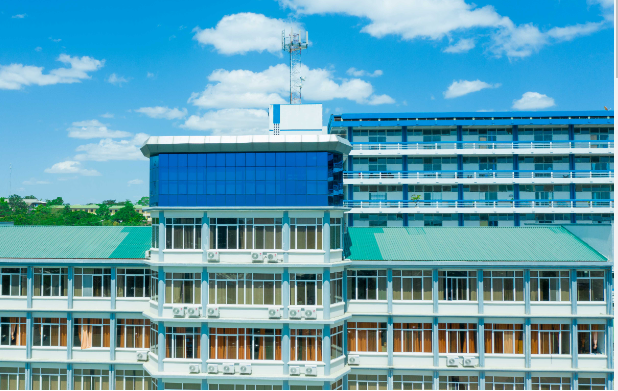
Bugando University Fee Structure For Diploma 2024/2025 CUHAS Bugando, CUHAS Bugando Fee Structure for 2024/2025: A Comprehensive Guide
As prospective students and their families prepare for the academic year 2024/2025, understanding the fee structure at the Catholic University of Health and Allied Sciences (CUHAS) Bugando is crucial for effective financial planning. This post provides a detailed overview of the fee structure for various programs, including diploma, undergraduate, and postgraduate courses, helping students make informed decisions about their education.
Overview of CUHAS Bugando
Located in Mwanza, Tanzania, CUHAS Bugando is renowned for its commitment to providing high-quality education in health sciences. Established in 2003, the university offers a range of programs, from diploma and undergraduate to postgraduate degrees in fields such as Medicine, Pharmacy, Medical Laboratory Science, Nursing, and Public Health. Its close partnership with Bugando Medical Center (BMC) ensures that students receive practical, hands-on training essential for their future careers.
Understanding the Fee Structure
Navigating the fee structure at CUHAS Bugando can seem daunting, but it is essential for several reasons:
- Financial Planning: By understanding the breakdown of tuition, registration, and additional costs, students can manage their finances better and avoid any financial strain.
- Avoiding Surprises: Awareness of all fees and deadlines helps in preventing unexpected financial issues during the academic year.
- Evaluating Affordability: Knowing the full cost allows students to assess whether CUHAS Bugando fits within their budget and to explore financial aid options if needed.
- Informed Decision-Making: A clear understanding of the costs involved helps students make well-informed choices about their education.
Fee Structure for Diploma Programs
For the academic year 2024/2025, CUHAS Bugando’s diploma programs encompass various components. Here’s a breakdown of the costs associated with diploma courses:
1. Payable to the University
| Component | Year 1 (TSh ‘000) | Year 2 (TSh ‘000) | Year 3 (TSh ‘000) |
|---|---|---|---|
| Tuition | 1,900,000 | 1,900,000 | 1,850,000 |
| Equipment/Special Faculty Requirement | 150,000 | 150,000 | 150,000 |
| Exam Fee | 240,000 | 240,000 | 170,000 |
| Sustainability Fund | 30,000 | 30,000 | 30,000 |
| NACTE Quality Assurance Fee | 20,000 | 20,000 | 20,000 |
| Registration | 10,000 | 10,000 | 10,000 |
| ID Card | 10,000 | – | – |
| Graduation Fee | – | – | 70,000 |
| Field Supervision | 50,000 | 50,000 | – |
| Transcript Fee | – | – | 30,000 |
| Caution Money | 50,000 | – | – |
| Development Levy | 100,000 | 100,000 | 100,000 |
| Student Union | 20,000 | 20,000 | 20,000 |
| Total Cost to University | 2,580,000 | 2,520,000 | 2,520,000 |
2. Payable to NHIF
| Component | Year 1 (TSh ‘000) | Year 2 (TSh ‘000) | Year 3 (TSh ‘000) |
|---|---|---|---|
| Medical Capitation | 50,400 | 50,400 | 50,400 |
3. Payable to Students
| Component | Year 1 (TSh ‘000) | Year 2 (TSh ‘000) | Year 3 (TSh ‘000) |
|---|---|---|---|
| Stationery | 50,000 | 50,000 | 50,000 |
| Books | 150,000 | 150,000 | 150,000 |
| Elective & Research | – | – | – |
| Accommodation (IAHS) | 480,000 | 480,000 | 480,000 |
| Fieldwork | 600,000 | 600,000 | 600,000 |
| Meals | 600,000 | 600,000 | 600,000 |
| Total Cost to Student | 1,880,000 | 1,880,000 | 1,880,000 |
Undergraduate and Postgraduate Programs
Undergraduate Programs
- School of Pharmacy: Bachelor of Pharmacy (B. Pharm) requires three principal passes in Physics, Chemistry, and Biology at A-level with specific grade requirements or equivalent qualifications.
- Archbishop Anthony Mayala School of Nursing: Offers various durations (2, 3, or 4 years) based on previous qualifications. Entry requirements include principal passes in relevant subjects or equivalent qualifications.
Postgraduate Programs
- Master of Medicine (MMED): Requires an MD degree, a B grade or higher in the specialty, completed internship, and at least one year of work experience.
- Master of Public Health (MPH): Open to MDs or holders of relevant health degrees with specified grades and work experience.
- Master in Paediatric Nursing (MSc.PN): Requires a BScN or equivalent with a minimum GPA and relevant work experience.
- PhD Programs: Candidates must have a relevant Master’s degree and demonstrate the ability to conduct independent research.
Conclusion
Understanding the CUHAS Bugando fee structure is a critical aspect of preparing for higher education. By knowing the costs associated with diploma, undergraduate, and postgraduate programs, students can better manage their finances and make informed decisions. For more detailed information and to apply, prospective students should visit the CUHAS Bugando website or contact the admissions office directly.
Also Read;
- Sifa Za Kujiunga Na Chuo cha Afya Bugando| CUHAS Entry Requirements
- Kozi na Sifa Za Kujiunga Chuo cha Afya Bugando | Bugando University CUHAS 2024/25: A Comprehensive Guide
- Courses Offered by Bugando CUHAS 2024/2025
- CUHAS| Catholic University of Health and Allied Sciences – Bugando: Application Process and Details
- CUHAS| Catholic University of Health and Allied Sciences – Bugando: Application Process and Details
- CUHAS Bugando Fees Structure, Prospectus & Almanac 2024/2025

